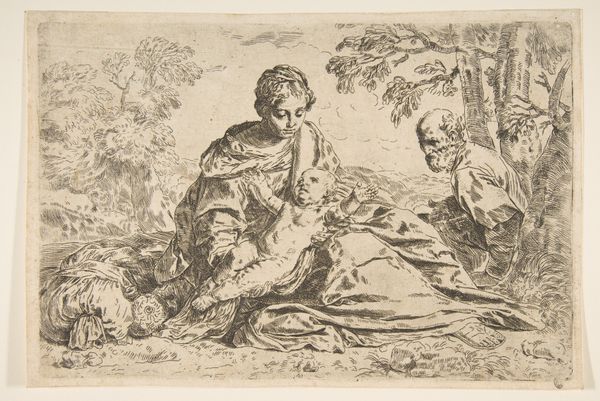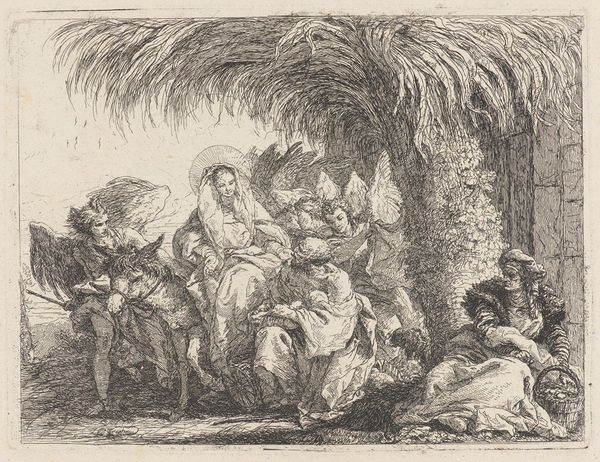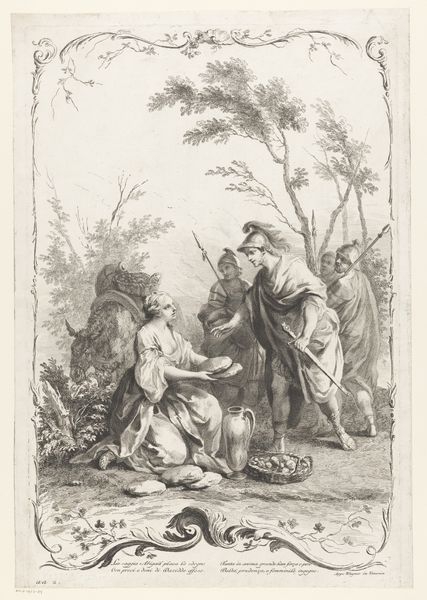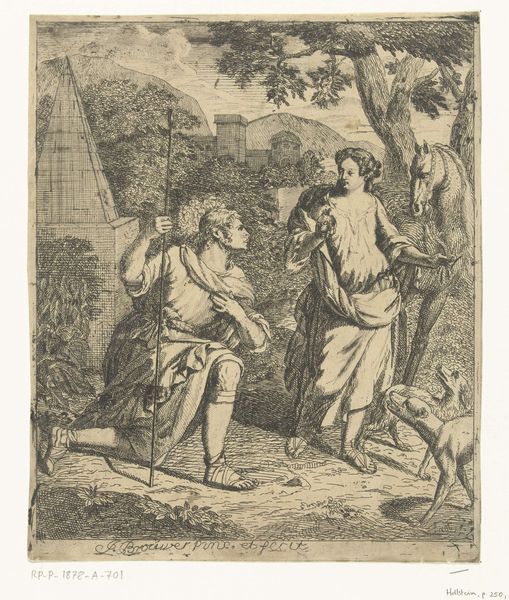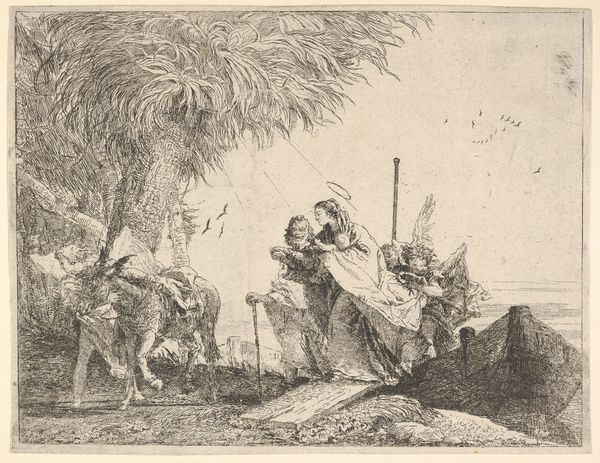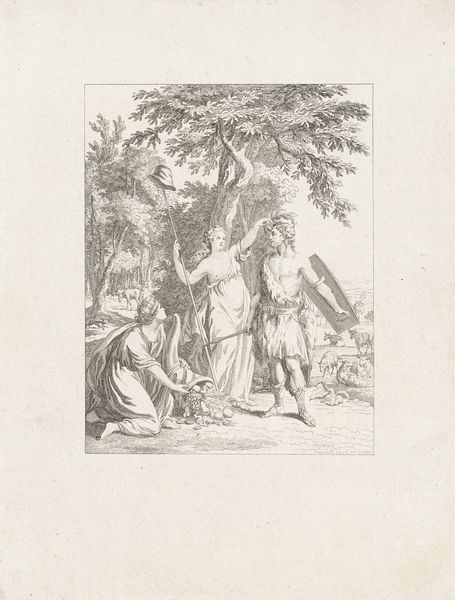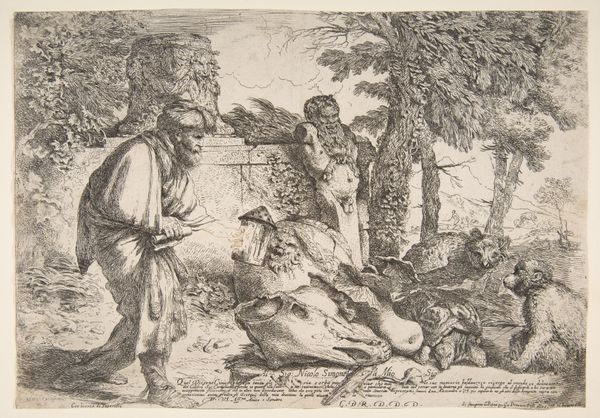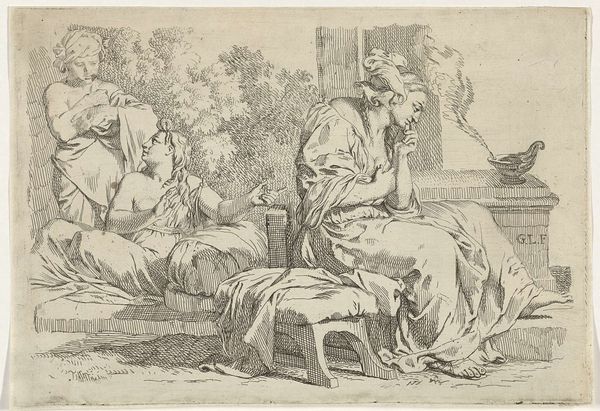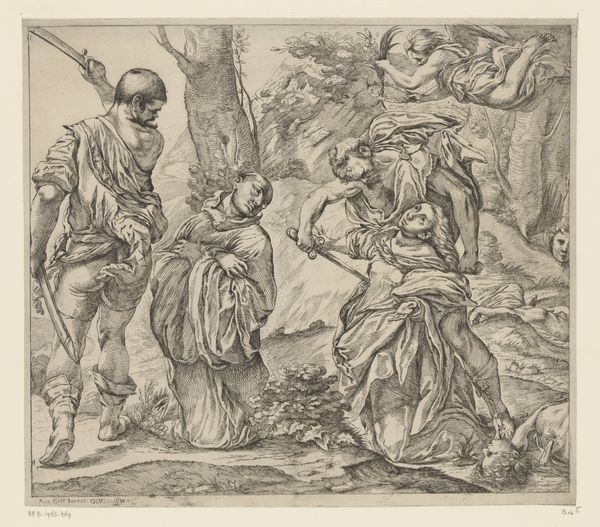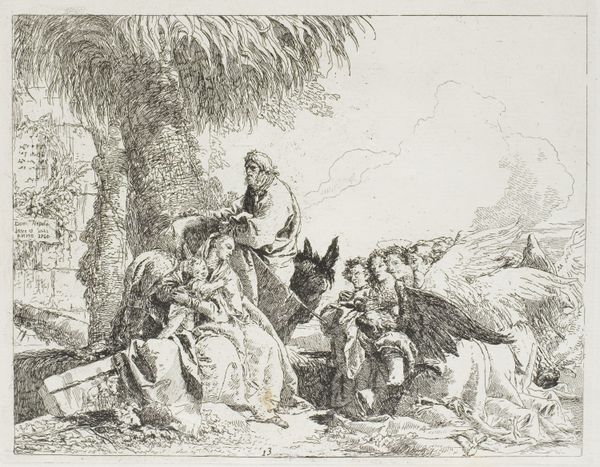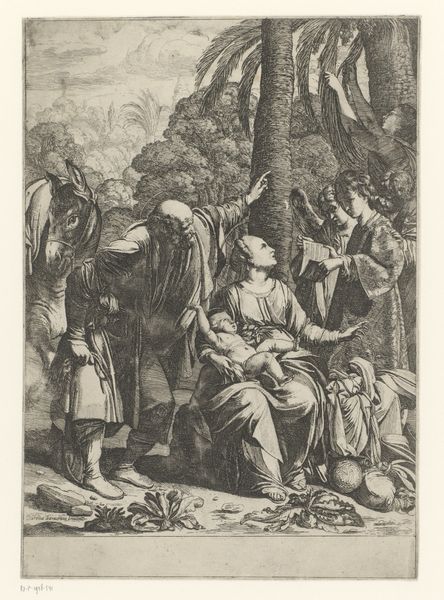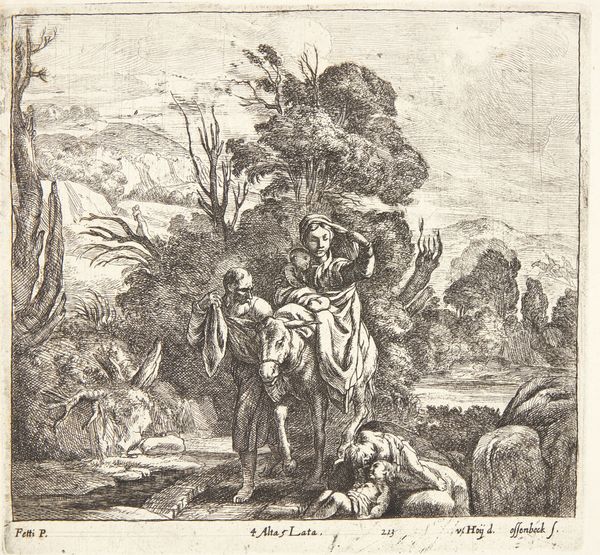
drawing, print, ink
#
drawing
#
ink drawing
#
baroque
#
pen drawing
# print
#
landscape
#
figuration
#
ink
#
history-painting
Dimensions: plate: 16.8 × 17.9 cm (6 5/8 × 7 1/16 in.) sheet: 17.2 × 18 cm (6 3/4 × 7 1/16 in.)
Copyright: National Gallery of Art: CC0 1.0
Editor: So, this is Elisabetta Sirani's "Rest on the Flight into Egypt" from around 1660. It's an ink drawing, maybe even a print. There's something very intimate about it despite the formal subject. What strikes me most is the linework; it's incredibly detailed yet feels spontaneous. What can you tell me about it? Curator: The key here, as you observe, lies within the processes employed and their accessibility. Sirani, as a woman in the 17th century, would have faced certain constraints regarding access to large-scale productions like frescos. A medium like ink drawing democratizes production, bringing into play questions about skill as labor and its inherent social valuation. The image becomes an artifact, not just of devotional iconography, but of skilled labor manifested through affordable materials. Consider how easily prints like these could disseminate, challenging the dominance of larger, more exclusive altarpieces. Do you see how the very materiality of the work opens discussions of class and accessibility within the art world? Editor: That’s fascinating. I hadn't thought about the accessibility of printmaking in that way, challenging the grand scale. So it’s not just about what the image represents, but *how* it was made and *who* had access to the final product. Curator: Precisely! The “who” becomes equally important as the "what." Did Sirani’s gender impact the cost and valuation of her materials or her labor, especially within a workshop environment that she headed? Are these prints individually priced works of art, or primarily devotional ephemera produced en masse? It’s in analyzing these practical conditions of artmaking that the image acquires profound cultural resonance. Editor: That really shifts my perspective. I came in looking for symbolic meanings within the image, but now I am thinking about the paper, the ink, the act of drawing itself as a kind of… social statement? Curator: Exactly! The tangible labor involved transforms this from a mere depiction into a document, revealing social hierarchies, means of production, and challenges to traditional artistic structures. So what has been gleaned, would you say? Editor: It's amazing how shifting the focus to the material aspects can completely change the artwork's narrative and reveal these interesting insights! Thanks!
Comments
No comments
Be the first to comment and join the conversation on the ultimate creative platform.
